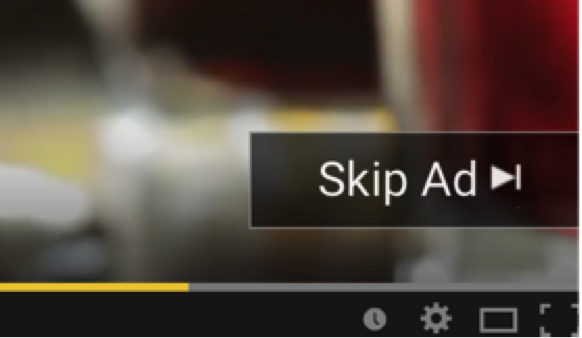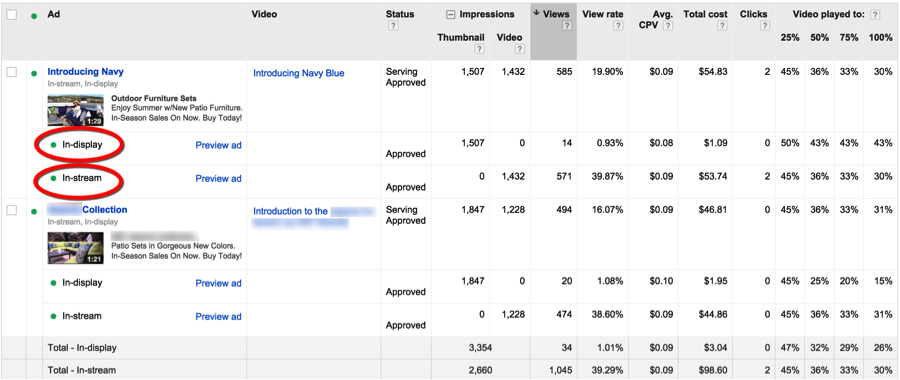We’ve written before about the growing popularity of online video ads. But if you haven’t yet tried AdWords for video, you may not realize you have two options for where and how your video ads display: TrueView in-stream video ads and TrueView in-display video ads.
TrueView In-Stream Video Ads
In-stream video ads play at the start of videos you’ve selected to watch. The ads can appear on either:
- YouTube Watch pages
- Video publisher pages on the Google Display Network (including YouTube).

After the video ad plays for five seconds, you have the option to skip the rest of the ad:

As an advertiser, your account is charged only when the viewer watches 30 seconds of the ad (or to the end of the ad if it’s less than 30 seconds long).
TrueView In-Display Video Ads
TruView in-display video ads display either:
- At the top of YouTube search results
- In a list on the right side of YouTube pages where videos are played
- Within other website content across the Google Display Network.
The appearance of video ads may vary slightly depending on where they’re published. Each publisher (such as YouTube) has its own ad sizes and formats.
As an advertiser, you’re charged once the viewer clicks on the thumbnail of your ad. (As noted above, this differs from in-stream video ads where you’re charged only after a portion of the ad has played.)

With both formats, you have many targeting options, including keywords, demographics, interests, topics and remarketing lists—as well as combinations of these factors.
Video Ad Metrics
We love the metrics that come with AdWords for video. One of the easiest places to find these metrics is on your AdWords campaign page:

Here, you have a side-by-side comparison of how your in-display ads and in-stream ads are performing. Here, you can see how they differ on views, view rates and percentage of video played.
Of course, interpreting these numbers isn’t so simple. To draw the right conclusions, you need to take into account how the ads are deployed, your target audience and their preferences, the products or services being promoted, the nature of your business and other related factors.
Often, it’s not worth tying yourself up in knots to try and figure out why something is working or not. Usually, the best approach is to experiment, see what works and then simply go with it—even if you can’t really explain WHY it’s working!
Now that you know the types of video ads available to you through AdWords, you might want to give them a try. But start small—and proceed with caution.






